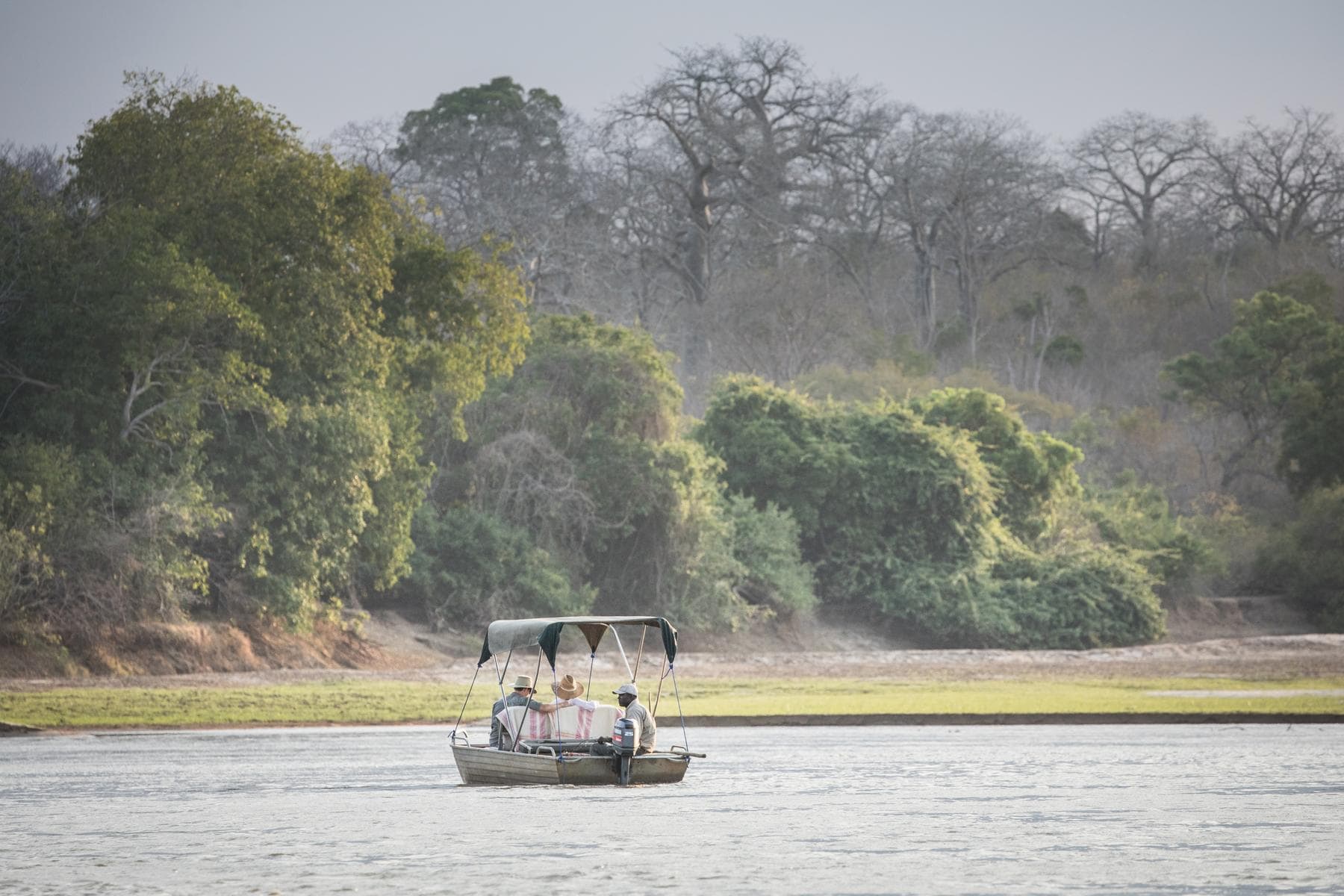At Sabi Sands, Africa’s big cats reign supreme. The reserve shares an unfenced border with the Kruger National Park, fostering an ecosystem that allows big game to thrive. Stylish, luxury lodges dot the reserve, ensuring that you can immerse yourself in the African wilderness in the most exclusive way possible.
Must-Visit Areas in Sabi Sands Game Reserve
Ideal for first-time safari-goers, Sabi Sands supports the Big Five and is known for consistent sightings of these magnificent animals, especially leopards. These two areas can provide you with mesmerising views and wildlife sightings:
Sand River: Lifeline for Wildlife

This river – also known as Manyeleti – is one of the more important waterways in the reserve. It’s a water source that supports an incredible abundance of wildlife, which makes the Sabi Sands so revered in the safari world. Sand River winds its way through a variety of environments, from thick vegetation to sandy areas to rocky outcrops, so you can see a vast array of wildlife along the shores (and in the water!).
Sabie River: Big Game Viewing and Birding
Running along the edge of Sabi Sands Game Reserve, the Sabie River is a must-visit for birders. During a birdwatching safari, fish eagles and kingfishers are common sightings here. Keep an eye out for waterbirds – especially migratory birds from the northern hemisphere. You’ll also spot hippos and crocodiles gliding in the water, while on the banks it’s not uncommon to see the Big Five.
When’s the Best Time to Visit Sabi Sands Game Reserve?
May to September is the best time to visit Sabi Sands – the minimal rainfall creates ideal game viewing conditions. Thin vegetation and fewer water sources make it easier to spot wildlife. October to April, while the wet season still offers travellers a memorable experience with many migratory bird species in the reserve as well as newborn animals.
Wildlife Found in Sabi Sands Game Reserve

Sabi Sands is a Big Five safari destination in South Africa, with sightings of all members – including the elusive leopard – being common. Often found in trees, these big cats ascend to high vantage points to survey the land and haul their prey up into the branches, securing it from other predators.
Other predator species to spot while on a Sabi Sands safari include cheetahs and hyenas. Keep an eye out for the mottled coats of wild dogs among the savannah brush – thriving packs now roam the region thanks to dedicated conservation efforts.
Sabi Sands is also a stronghold for the southern ground hornbill, one of the most threatened bird species in the country. The reserve works with the Mabula Ground Hornbill project to collect data on these magnificent birds, focusing on their nesting success, movement patterns, and behaviour to safeguard this species and secure its survival.
How to Get to Sabi Sands Game Reserve
After landing at OR Tambo International Airport in Johannesburg, you can get a shuttle flight with FedAir to the game reserve’s airstrip.